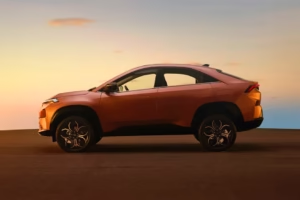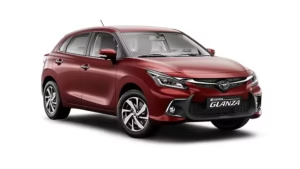End of the Road for Clutch? Hyundai Declares Manual Gearbox “Extinct”, Triggers Outrage

In a bold and controversial statement that’s shaken the global auto community, Hyundai recently declared that manual transmissions are effectively obsolete, suggesting that the clutch pedal is on its way out. While this may reflect growing industry trends in Europe and North America, the reaction from car enthusiasts and users in countries like India has been fierce. With affordability, driving control, and mechanical simplicity still high on many buyers’ lists, the question arises — is it really the end of the road for manuals, or just a miscalculated forecast?

Hyundai’s Stance: Nobody Wants Manual Gearboxes Anymore
Hyundai’s Europe Technical Center Managing Director made headlines when he said younger buyers under 40 no longer care for:
Manual gearboxes
Mechanical handbrakes
Analog instruments
His view is that modern car buyers want ease, automation, and digital experiences — preferences that align with electric vehicles (EVs) and advanced automatic systems. Backing this claim, Hyundai is gradually phasing out manual transmission offerings across many of its lineups in European markets.
But what sparked controversy wasn’t just the decision — it was the blanket assumption that manual cars are unwanted or outdated worldwide.
The Global Divide: Where Manuals Still Matter
While Hyundai may be steering away from clutch pedals in Europe and the U.S., manual transmissions still dominate in:
India – Over 70% of small car sales involve manual variants
Southeast Asia and Latin America – Where affordability and fuel efficiency drive demand
Africa – Where repair simplicity and rugged performance make manuals more viable
Car enthusiast markets worldwide – Where driving purity is king
Many netizens across platforms like Reddit, Team-BHP, and Twitter have passionately refuted Hyundai’s claims.
Manuals are disappearing not because no one wants them, but because manufacturers stopped offering good ones, wrote one Reddit user.
Another added:
If manuals are dead, why do waiting periods on models like the Mahindra Thar MT still exist in India?

The Case for Manual: Why Drivers Still Choose the Clutch
Despite advancements in automatics and dual-clutch transmissions (DCTs), many drivers still prefer manuals for reasons like.
Affordability
Manual variants often cost significantly less than their automatic counterparts, both upfront and in long-term maintenance.
Ease of Maintenance
Manual gearboxes are mechanically simpler. They don’t rely on expensive sensors, fluid systems, or ECUs that can fail or require specialized servicing
Driving Pleasure
For driving enthusiasts, manual cars offer a level of control, engagement, and fun that automatics can’t replicate.
Better Fuel Economy (Traditionally)
Although newer automatics are catching up, many manual cars still offer better mileage in real-world conditions, especially in rural and semi-urban areas.
Backlash Online: Enthusiasts and Users Push Back
Car lovers across the world didn’t hold back their frustration. Hashtags like #SaveTheManuals and #IShiftMyOwnGears trended in response to Hyundai’s claim.
From India, many pointed out how the automatic ecosystem is still evolving, with many mechanics untrained in servicing modern ATs. Team-BHP members flagged.
Costly and complex automatic transmission repairs
Lack of transparency on servicing AT fluid
Dealers misleading customers by calling ATs “sealed for life
EVs and the Future: A Silent Shift
Electric vehicles, by design, do not require traditional gearboxes. As EV adoption increases, this will naturally phase out manual transmissions in most mainstream segments. The transition, however, is not uniform worldwide. In developing economies, infrastructure and affordability barriers mean EVs are still years away from mass adoption.
What It Means for Indian Car Buyers
In India, where manual cars are still the default choice for millions, Hyundai’s statement feels out of sync with market reality. Cars like the Maruti Suzuki Swift, Hyundai i20, Tata Punch, and Mahindra Bolero still report strong manual sales.
While urban demand for automatics is rising — especially in traffic-heavy cities — clutch-based vehicles continue to serve rural, semi-urban, and budget-conscious consumers effectively.
Is This the End of the Road?
Hyundai’s declaration might signal a strategic shift, but it doesn’t mean the clutch pedal is dead — at least not yet.
Manual gearboxes are becoming a niche feature rather than a mainstream one, especially in developed markets. But for regions where affordability, repairability, and driving connection matter, manuals will likely survive well into the next decade.
Final Thoughts
Automotive evolution is inevitable — but it must be inclusive, not dismissive. By prematurely calling the manual extinct, Hyundai may have alienated a loyal segment of its global customer base.
In the end, it’s not about whether manuals are outdated — it’s about whether manufacturers are giving people the choice.






